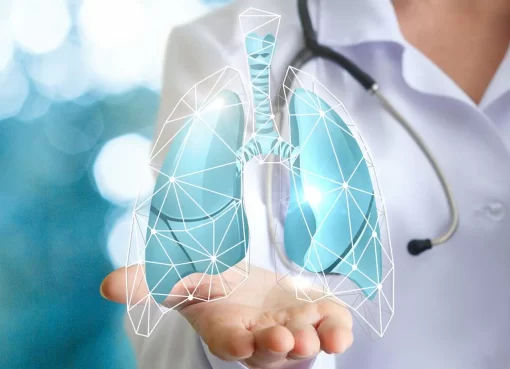Cardiomyopathy is a relatively common disease that occurs when the heart muscle is affected. That is, it loses the ability to pump blood to the rest of the body effectively.
This pathology usually appears in young people and is one of the main reasons for undergoing a heart transplant. Three types are distinguished: dilated cardiomyopathy (a consequence of the weakening of the heart’s pumping action), hypertrophic cardiomyopathy (characterised by ventricular hypertrophy) and restrictive cardiomyopathy (caused by the rigidity of the ventricular walls).
Causes
Viral infections are one of the leading causes that trigger this pathology. In some cases, cardiomyopathy results from complex congenital heart disease; in others, it is from nutritional deficiencies, rapid and uncontrollable heart rhythms, or a consequence of certain types of cardiotoxic chemotherapy. However, a genetic abnormality can also cause it. In other situations, its cause is not identifiable.
However, heart muscle failure can be caused by three leading causes, according to the Heart Foundation: Having a poor contraction that prevents the heart from emptying properly and thoroughly.
Having poor relaxation that does not allow the heart to fill properly.
That a bad contraction and a bad relaxation occur simultaneously prevents the heart from pumping the optimal amount of blood.
Symptoms
Symptoms vary depending on the type of cardiomyopathy in question:
In the case of dilated cardiomyopathy, the manifestations are: pale or ashy skin, cold or sweaty, increased heart rate and rapid breathing, breathing difficulties, fatigue, irritability, chest pain, poor appetite and slow growth in the kids.
Hypertrophic cardiomyopathy is manifested by fainting (syncope), chest pain, dyspnea on exertion, and palpitations caused by irregular heartbeats that can lead to sudden death.
Finally, restrictive cardiomyopathy causes heart failure with dyspnea (shortness of breath) and tissue swelling (oedema). Angina pectoris and fainting occur less frequently than in hypertrophic cardiomyopathy. Instead, they are common arrhythmias, and palpitations are common.
Prevention
According to specialists, the best way to prevent cardiomyopathy from developing is to know the risk factors of the diseases that cause it and try to modify your lifestyle to prevent it from appearing.
Maintaining blood pressure at recommended levels and following a diet rich in vegetables, fruits and legumes, such as the Mediterranean diet, also helps prevent it.
Lastly, relatives of patients with cardiomyopathy should especially monitor the risk factors to prevent their appearance.
Types
The main types of cardiomyopathy are:
Dilated cardiomyopathy
It appears due to the weakening of the heart’s pumping action. It causes irregular heart rhythms (arrhythmias), risk of blood clots and congestive heart failure.
Causes
Dilated cardiomyopathy is associated with coronary artery disease. A viral infection (the Coxsackie B virus causes the most common), chronic hormonal disorders, such as diabetes and thyroid disease, and long-term use of some drugs ( alcohol and cocaine ) and certain drugs (some antidepressants). They can also cause their appearance. On rare occasions, its cause is due to pregnancy or certain connective tissue diseases, such as rheumatoid arthritis.
Treatment
The objective of the specialist is to achieve through pharmacological treatment that the patient increases the productivity of the heart rhythm. To achieve this, it must reduce the workload of the heart, and its oxygen requirements, prevent the formation of clots, reduce inflammation and regulate irregular heartbeats.
Forecast
About 70 per cent of people with dilated congestive cardiomyopathy die within five years of the first symptoms; the prognosis worsens as the walls of the heart become thinner, and the heart’s pumping function declines. Heart rhythm abnormalities also indicate a poor prognosis.
Dilated cardiomyopathy
Hypertrophic cardiomyopathy
It is a group of cardiac disorders characterised by ventricular hypertrophy. The disease manifests when the muscle mass of the left ventricle is larger than normal or the septum between the two ventricles is enlarged. This pathology obstructs the outflow of blood from the left ventricle. The heart thickens and becomes stiffer than normal, causing greater resistance to the entry of blood from the lungs. One of the consequences is a stagnation of blood in the pulmonary veins.
Causes
In many cases, the pathology appears for genetic reasons. That is, the parents transmit the pathology to their children. However, it can also develop in patients with acromegaly, a condition caused by too much growth hormone in the blood, or in people with pheochromocytoma, an adrenaline-producing adrenal tumour. Patients with neurofibromatosis, another hereditary disease, can also develop the pathology.
Treatment
Treatment aims to reduce the heart’s resistance to filling with blood between beats. The main therapy is administering, jointly or separately, beta-blockers and calcium antagonists. Surgical intervention in which part of the heart muscle is removed increases blood flow from the heart, but it is only carried out in patients with disabling symptoms despite drug treatment. Surgical treatment may include the placement of a pacemaker, and in the worst case, a heart transplant would be performed.
Forecast
Approximately 4 per cent of people with hypertrophic cardiomyopathy die each year. Death usually occurs suddenly; death due to chronic heart failure is less common. Therefore, genetic counselling is recommended if the disorder is hereditary and it is desired to have offspring.
restrictive cardiomyopathy
It is a group of heart muscle disorders characterized by stiffening of the ventricular walls, which causes a resistance to the normal filling of blood between beats. It is the least common form of cardiomyopathy and shares many features with hypertrophic cardiomyopathy.
Causes
The cause is still unknown. The heart muscle is gradually replaced by scar tissue in one of the two basic types. In the other type, the muscle is infiltrated by an abnormal substance, such as amyloidosis and sarcoidosis. Another infiltration occurs if the body contains too much iron, accumulating in the heart muscle, causing an overload (hemochromatosis). Ultimately, this cardiomyopathy could result from a tumour invading heart tissue.
Treatment
In most cases, there is no effective treatment. Diuretics, normally used to treat heart failure, reduce the volume of blood that reaches the heart and make the situation worse instead of better.
The drugs normally used in heart failure to reduce the workload on the heart are not helpful because they lower blood pressure too much. However, the cause of restrictive cardiomyopathy can sometimes be treated to prevent heart lesions from worsening or even partially reverse them. For example, drawing blood at regular intervals reduces the amount of iron stored in people with hemochromatosis. Therefore, in the case of sarcoidosis, the administration of steroids is recommended.
Forecast
About 70 per cent of patients die within five years of the appearance of the first manifestations.
Diagnosis
The diagnosis of the pathology is made by recognising its symptoms through the clinical interview.
Once the specialist has distinguished the symptoms that may lead to the suspicion of the disease, the doctor can carry out a series of tests to confirm the diagnosis, such as the electrocardiogram, echocardiogram or magnetic resonance imaging.
If, despite these procedures, the doctor doubts, he can perform a biopsy to confirm it.
Treatments
The main consequence of cardiomyopathy is heart failure. To remedy it, changes in diet (less salt or fluids), exercise or trying to reduce cholesterol are usually recommended. Medications that keep the heart from getting worse may also be prescribed.
In the most severe cases, surgery is performed:
- A pacemaker may be implanted to help regulate heart rhythm or synchronize heartbeats.
- Perform coronary artery bypass surgery or angioplasty to improve myocardial circulation.
- In the most serious cases, the specialist can implant an artificial pump that helps the heart pump blood.
- A heart transplant.
Forecast
In the case of dilated cardiomyopathy, the prognosis is grave. About 70 per cent of people with this pathology die within five years after the appearance of the first symptoms, as occurs with diagnoses of restrictive cardiomyopathy; the prognosis worsens as the walls of the heart become thinner, and the heart’s pumping function declines.
In hypertrophic cardiomyopathies, 4 per cent of patients die each year.





